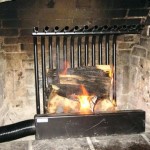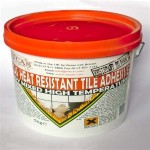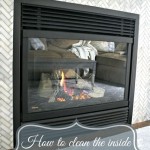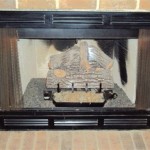Ethanol Fireplace Safety: A Comprehensive Guide
Ethanol fireplaces have gained popularity as a modern and versatile heating solution, offering the ambiance of a traditional fire without the need for a chimney or gas line. These fireplaces burn liquid ethanol fuel, producing heat, water vapor, and carbon dioxide. While offering aesthetic appeal and relative ease of installation, understanding and adhering to strict safety guidelines are paramount to ensure the safe and responsible operation of an ethanol fireplace. Failure to do so can result in fire hazards, property damage, and personal injury.
This article provides a comprehensive overview of ethanol fireplace safety, covering essential aspects from choosing a suitable fireplace to proper refueling techniques and maintenance procedures. Adhering to these guidelines will minimize risks and contribute to a safer and more enjoyable experience with an ethanol fireplace.
Choosing a Certified and Appropriate Fireplace
The initial step towards ensuring ethanol fireplace safety involves selecting a unit that meets established safety standards and is appropriate for the intended environment. A reputable manufacturer's certification, such as UL (Underwriters Laboratories) or similar recognized testing organizations, is crucial. Certification indicates that the fireplace has undergone rigorous testing to meet specific safety criteria for design, construction, and performance.
Before purchasing, verify that the chosen fireplace is appropriately sized for the room in which it will be used. Overly large fireplaces in small rooms can lead to excessive heat and potentially hazardous conditions. Consult the manufacturer's guidelines for recommended room sizes and ventilation requirements. Factors such as ceiling height and room volume should be considered. An undersized fireplace will not provide adequate heating, while an oversized unit can create an uncomfortable and potentially dangerous environment.
Consider the fireplace's construction materials. Opt for models constructed from high-quality, fire-resistant materials such as stainless steel or tempered glass. Inferior materials can warp, crack, or even melt under heat, increasing the risk of fuel leakage or structural failure. Check for sturdy construction and secure connections to prevent accidental spills or dislodgement of components. Inspect the fuel reservoir for leaks or damage before each use. Address any concerns with the retailer or manufacturer immediately.
Safe Fuel Handling and Refueling Procedures
The handling and refueling of ethanol fuel are critical aspects of ethanol fireplace safety. Ethanol is a flammable liquid, and proper procedures must be followed to prevent spills, ignition, and potential injuries. Always use fuel specifically formulated for ethanol fireplaces. Using other types of fuel, such as gasoline or kerosene, is extremely dangerous and can lead to explosions or toxic fumes.
Refuel the fireplace only when it is completely cool and has been extinguished for at least 15 minutes. Never attempt to refuel a lit or still-hot fireplace. Hot surfaces can instantly ignite the ethanol vapors, causing a flash fire or explosion. Ensure adequate ventilation in the area during refueling. Open windows or doors to allow for the dissipation of any spilled fuel vapor.
Use a funnel to carefully pour the ethanol fuel into the reservoir, avoiding spills. Overfilling the reservoir can lead to fuel leakage and increase the risk of a fire. Fill the reservoir to the recommended level as indicated by the manufacturer's instructions, typically leaving some space to allow for expansion. After refueling, wipe up any spilled fuel immediately with a damp cloth. Properly dispose of the cloth to prevent spontaneous combustion. Always store ethanol fuel in a cool, dry, and well-ventilated area, away from heat sources, open flames, and direct sunlight. Keep it out of reach of children and pets.
Never smoke or use open flames near ethanol fuel. Ethanol vapor is highly flammable and can easily ignite. Keep a fire extinguisher readily accessible in case of an accidental fire. Ensure the extinguisher is suitable for Class B fires, which involve flammable liquids.
Ensuring Proper Ventilation and Usage Practices
Adequate ventilation is essential for the safe operation of an ethanol fireplace. While ethanol fireplaces produce relatively low levels of carbon monoxide compared to traditional wood-burning fireplaces, proper ventilation is still necessary to prevent the buildup of carbon dioxide and maintain air quality. Carbon dioxide is a byproduct of combustion, and excessive levels can cause drowsiness, headaches, and even asphyxiation in poorly ventilated spaces.
Ensure that the room in which the ethanol fireplace is used has adequate ventilation. Open windows or doors periodically to allow for fresh air circulation. The amount of ventilation required will depend on the size of the room, the size of the fireplace, and the duration of use. Follow the manufacturer's recommendations for ventilation requirements. Installing a carbon monoxide detector in the room is a highly recommended safety precaution. Carbon monoxide detectors provide an early warning of dangerous carbon monoxide levels, allowing for prompt action to prevent poisoning.
Never leave an ethanol fireplace unattended while it is burning. Keep children and pets away from the fireplace to prevent accidental contact or burns. Use a fireplace screen or guard to prevent flammable materials from coming into contact with the flame. Ensure that curtains, furniture, and other combustible materials are kept at a safe distance from the fireplace, as specified by the manufacturer. Do not use the fireplace to cook food or heat flammable materials. Avoid placing anything on top of or directly in front of the fireplace while it is in use.
Only use the fireplace for its intended purpose, which is to provide supplemental heating and ambiance. Do not use it as a primary heating source, especially in poorly insulated spaces. Overuse can lead to overheating and create a fire hazard. Monitor the fireplace closely while it is in operation and extinguish it immediately if any unusual smells, smoke, or flames are observed. If the fireplace malfunctions or experiences a fuel leak, discontinue use immediately and contact the manufacturer or a qualified technician for assistance.
Consider using an ethanol fireplace with safety features such as a flame regulator, which allows for adjusting the flame height and heat output. Some ethanol fireplaces also come equipped with sensors that automatically shut off the fuel supply if the fireplace is tipped over or experiences a malfunction. These features can enhance safety and provide added peace of mind.
Regular maintenance of the ethanol fireplace is essential for ensuring safe and reliable operation. Clean the fireplace regularly to remove any dust, debris, or spilled fuel. Follow the manufacturer's instructions for cleaning procedures. Inspect the fuel reservoir, burner, and other components for signs of wear, damage, or corrosion. Replace any damaged parts immediately. If you are unsure about performing any maintenance tasks, consult a qualified technician. By adhering to these safety guidelines, individuals can enjoy the benefits of an ethanol fireplace while minimizing the risks associated with its operation.
It's also important to be aware of any local regulations or building codes that may apply to the installation and use of ethanol fireplaces. Check with your local fire department or building inspector to ensure compliance with all applicable regulations. These regulations may address issues such as ventilation requirements, clearance distances from combustible materials, and the type of fuel that can be used.
In summary, ethanol fireplaces can be a safe and enjoyable addition to a home or other space, provided that proper safety precautions are taken. By selecting a certified fireplace, handling fuel safely, ensuring adequate ventilation, and adhering to safe usage practices, individuals can minimize the risks associated with ethanol fireplaces and enjoy their benefits without compromising safety. Regular maintenance and a commitment to safety are essential for ensuring the long-term safe operation of these fireplaces.

The Ion Features And Safety Benefits Of An Ethanol Fireplace

Ethanol Burner Inserts Afire Smart Automatic Remote Controlled

Ethanol Fireplace Inserts

Are Indoor Ethanol Fireplaces Safe New Scientific Research

Ethanol Burners Bio Inserts

Is An Ethanol Fireplace Right For You Maine Homes By Down East

Vb2 Ethanol Burner Convert Traditional Fireplaces Ecosmart Fire

Ethanol Fireplace Burner 3

Ignis Black Ethanol Fireplace Burner Insert Eb4800

Decoflame Ascot Lux Black Manual Ethanol Fireplace Insert Modern Fireplaces








